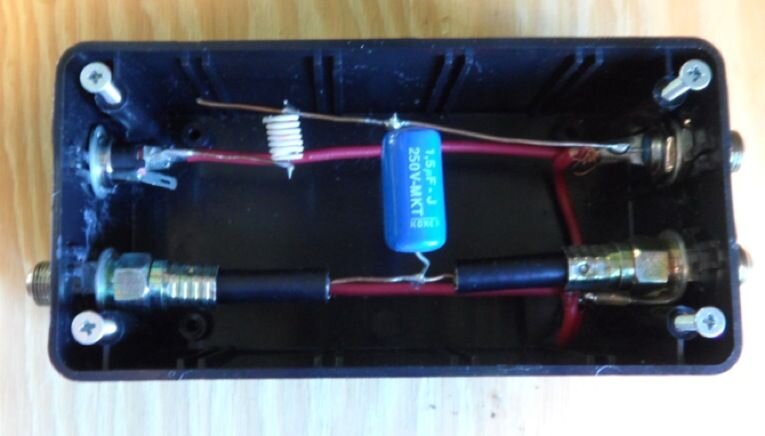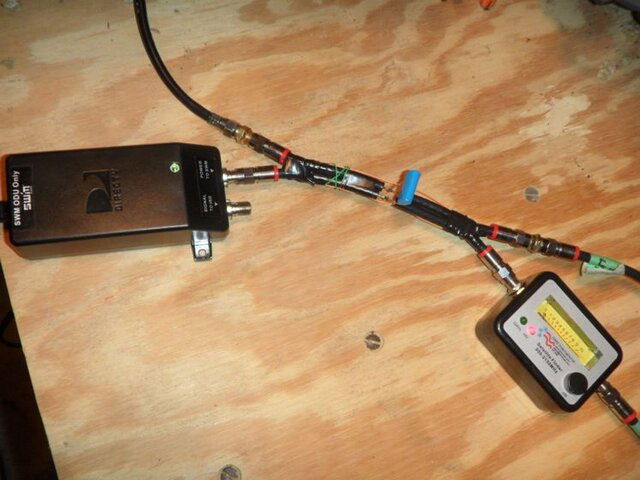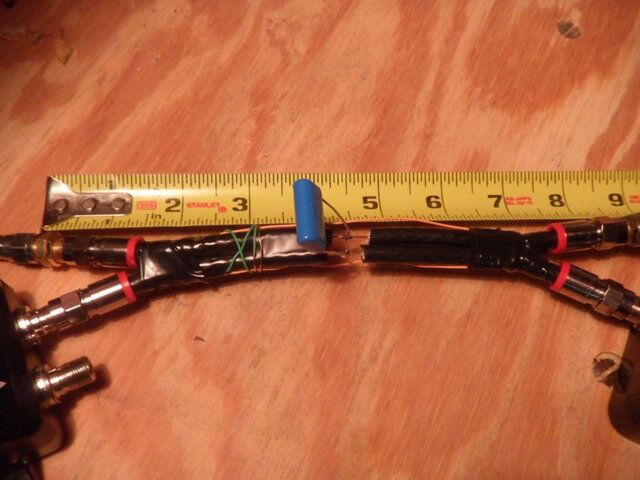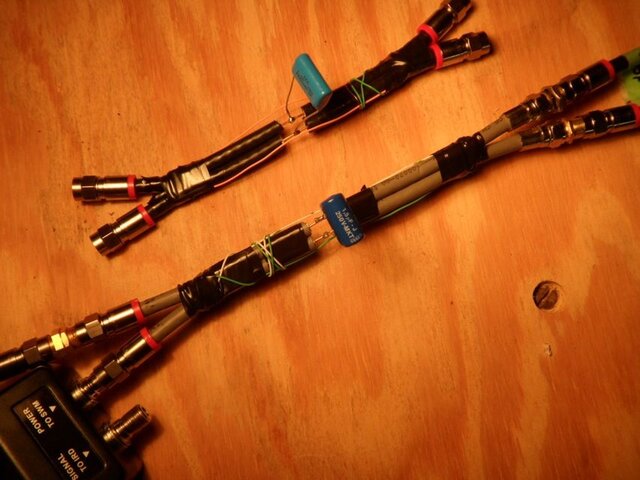Good news, everyone! I was able to get back to doing some tests and have something worth reporting, the HH-120 has been externally powered...
First, a few photos of what hasn't worked, without choke coils and with choke coils on the external power side:



In the above photos, tests were conducted with a Manhattan RS-1933 and an Amiko Mini HD SE. Power supplies from laptops, 18v cordless drill batteries, Directv 21v power supply and 9v batteries hooked in series with 22khz tone pass.
In the meantime, I researched a lot and took a few additional looks at the photos Qwert1515 posted in the thread
external power to a HH motor
I decided to try a bit of an alternative route, though essentially the same design.
The new design is 8-inches of coax with a section of shielding cut out at approximately the middle to expose the center conductor. On each end of the two coax, the black jacket has been cut away and a piece of telephone wire (orange/pink wire) tied to connect ground to each end of the coax. The green wires are additional telephone wire, with extra length in case needed. The green wires have been tied to the coax braid shield and connect the ground together on each length of coax. At the center of the coax, I used a 1.0K-250v capacitor (1.0uf) that I had used in my first trials with this. Power is a Directv 21v (20.5v on voltmeter) SWM power supply.
An Amiko HD SE was used for these tests using USALS. As I just got the receiver and do not have it fully set up, only three positions were tested this evening (97W, 95W and 87W). With each test, the dish moved to the appropriate location.
View of external power supply with splitter. Sat meter side is to HH-120 motor; coax with green tape is to LNBF on dish with other end to receiver. Motor output port is not used.

View of capacitor used. This is the same capacitor I used with the project at the start in the 'project box'.

View of device with tape measure for reference.

View of 22khz pass through on external power side of device connected to HH-120.

Test results have the dish moving to the appropriate location with the 20.5v from the power supply. Tests have been run with 20'-25' (approximate lengths) of coax to motor and dish. If necessary, I may make another splitter with longer lengths prior to the insertion position of the capacitor. I'm lead to believe the proximity of the coax to each other contribute to the 22khz pass via 'capacitance of a pair of parallel wires'. More tests are planned with the current splitter setup to see if it'll work okay on longer coax runs.











